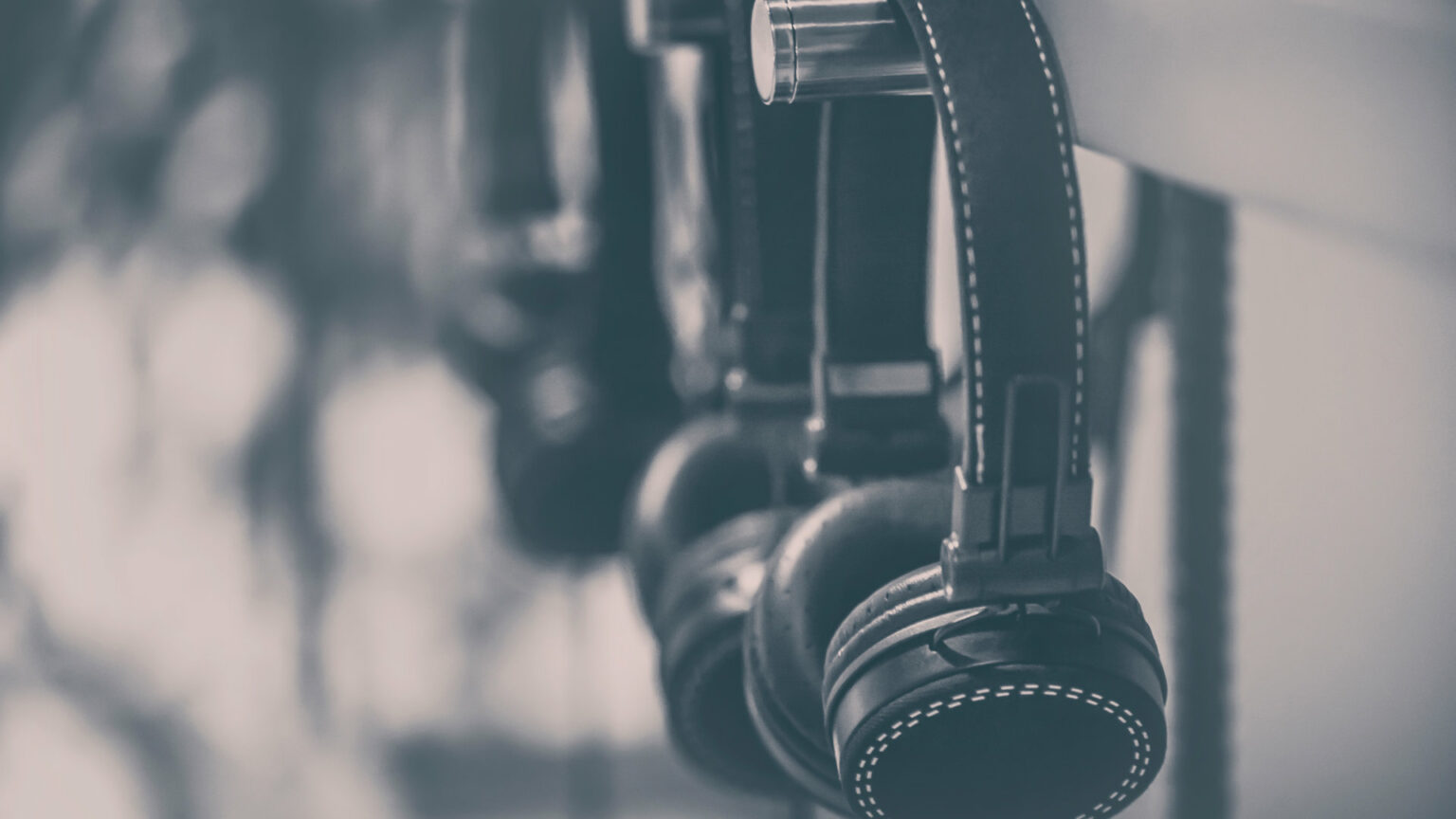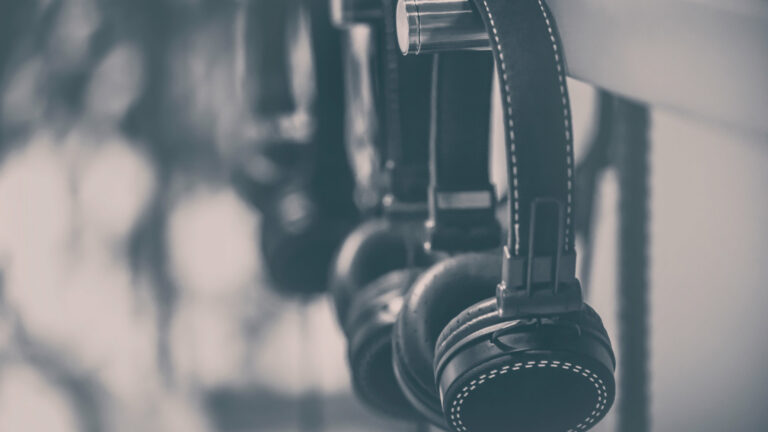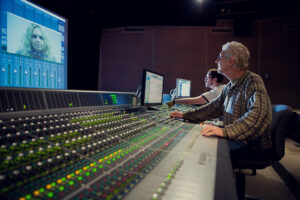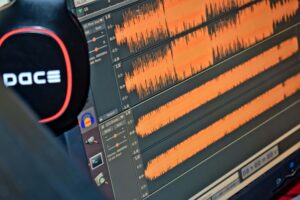Do you need expensive headphones to be a professional music producer? NO.
That being said, you definitely need the best headphones for music production. It may surprise you that the headphones we’ll be covering today are all under 200$, but they’re exceptional.
In other words, most headphones under that bracket (and sometimes above) aren’t good enough for professional music producers.
That’s why I won’t personally recommend anything outside this list…
- 1. Sennheiser HD 280 PRO
- 2. Audio-Technica ATH-M50X
- 3. AKG K92
- 4. PreSonus HD9
- 5. Sony MDR-7506
- Summary: 5 Best Headphones for Music Production
1. Sennheiser HD 280 PRO Closed-Back Studio Headphones
I’ve been using the Sennheiser HD 280 PROs for almost 10 years now. Needless to say, they’re my weapon of choice and have been with me since the beginning of my music career.
I don’t use them for everything, but they’re definitely my go-to headphones.
As far as build-quality is concerned, you should know that these are made in Germany (like most Sennheiser products) and that I’ve used them both inside/outside of my studio which means that the durability is exceptional. Hopefully they’ll last me another 10 years!
If you want to know about sound quality, then rest assured that the Sennheiser HD 280 PROs are well-balanced and accurate enough for mixing and mastering as well.
Specs and useful features
- Design: Circumaural, Closed-Back
- Driver Size: 40 mm
- Frequency Response: 8 – 25,000 Hz
- Sound Pressure Level: 113 dB
- Sound Isolation Level: -32 dB
- Nominal Impedance: 64 Ohms
- Connection Cable: Coiled, Non-Detachable (1-3 meters)
- Swivelling Ear Cups
- Foldable Enclosure
- Replaceable Parts (ear cups and headband)
User impressions
It seems that everyone who owns the Sennheiser HD 280 PROs is proud of them. The only complaints I’ve heard were about the design (some say it’s unattractive) and that they may become uncomfortable after long hours of use.
I don’t agree about the design, but it’s true that after 4+ hours they can become slightly irritating.
The one thing I noticed back in the day is that the bass response was much less pronounced than on the headphones I was used to. I haven’t heard much complaints about that lately, so maybe Sennheiser has addressed those concerns in later models?
The Sennheiser HD 280 PROs have been around since 2003, you know…
Either way, the weaker bass response never bothered me. I think it sounds much more natural (maybe even vintage) to my ears. It’s simply something I got used to, but I don’t rely on these 100% for mixing and mastering anymore.
Overall though, everyone agrees that these are GREAT VALUE.
Bottom-line
You’ll want maximum sound isolation if you’re looking for the best affordable headphones for music production. That goes double if you’re the kind of music producer that records live instruments as well.
That being said, the Sennheiser HD 280 PROs most certainly fit the bill.
I’ve used them in my home studio, recording sessions and even on public transit! The quality and durability is outstanding for the price. If I lost my pair, I’d definitely replace them with another because I’ve grown very fond of the sound character.
If you’re into vintage-sounding gear, I’m sure you’ll enjoy working with the Sennheiser HD 280 PROs. Your productions will most likely take on its characteristics, but remember to balance that with another pair of headphones.
The best part about owning affordable headphones is that you’ll have the budget to own multiple pairs to reference. That’s why I’d keep reading, even if you think you’ve found “the one”.
2. Audio-Technica ATH-M50X Closed-Back Studio Headphones
The Audio-Technica ATH-M50Xs are actually the least affordable headphones on this list, but I think they’re worth it. If you’re looking for something that’ll take care of both your music production and mixing and mastering needs, check these out.
I still recommend owning another pair for mixing and mastering, but these are accurate enough.
I recommend these over the ATH-M30Xs because of the larger drivers (45 mm vs 40 mm).
I also recommend the ATH-M50Xs because of the detachable cables. That’ll guarantee a much longer lifespan and choice of cables if you’re finicky about that kind of stuff. Overall, I think these headphones are probably one of the best on the list if you’re willing to spend a little more.
Specs and useful features
- Design: Circumaural, Closed-Back
- Driver Size: 45 mm
- Frequency Response: 15 – 28,000 Hz
- Sound Pressure Level: 99 dB
- Sound Isolation Level: -11 dB
- Nominal Impedance: 38 Ohms
- Connection Cable: Coiled & Straight, Detachable (1-3 meters)
- Swivelling Ear Cups
- Foldable Enclosure
- Detachable Cable
- Replaceable Parts (ear cups and headband)
User impressions
I’ve heard lots of great things about the Audio-Technica ATH-M50Xs. Mostly, I think the fact that they include 3 cables (coiled & straight) goes a long way, especially since they’re detachable. That makes transporting these headphones easier and safer.
The sound-quality also earns lots of praise amongst its users.
The only negative comments I keep hearing about involve comfort. It’s the same situation as the Sennheiser HD 280 PROs, but that’s the compromise you make for better sound isolation.
However, the Sennheiser HD 280 PROs have MUCH better sound isolation.
Bottom-line
My final thought is that the Audio-Technica ATH-M50Xs will be much more suited to music producers who mix and master their own music (or that of others). If you’re planning to record live instruments though, you’ll be better off with the Sennheiser HD 280 PROs.
Both of these headphones are very similar, but it just depends what you need them for.
If you prioritize accuracy, the Audio-Technica ATH-M50Xs will be much better and cover much more ground if you’re not planning to use more than one pair of headphones.
Personally, I’d prefer using the Sennheiser HD 280 PROs for music production/recording and using another pair more suited to mixing and mastering for that task. It’s up to you though, but that’s the only reason I’d justify spending more on these (for an all-in-one solution).
3. AKG K92 Closed-Back Studio Headphones
Throughout my music career, I’ve seen lots of studio musicians using the AKG K92s. That being said, I got multiple opportunities to try them out and was surprised each time.
The build-quality isn’t as robust as the Sennheiser HD 280 PROs, but that’s my only complaint.
The sound quality was surprisingly good even though they’re almost half the price of other headphones in this list. The comfort-level is also much higher and that’s most likely due to the type of headband used.
The AKG K92s are also much lighter, so that might be good or bad depending on what you like.
Specs and useful features
- Design: Over-Ear, Closed-Back
- Driver Size: 40 mm
- Frequency Response: 16 – 22,000 Hz
- Sound Pressure Level: 113 dB
- Sound Isolation Level: N/A
- Nominal Impedance: 32 Ohms
- Connection Cable: Straight, Non-Detachable (3 meters)
- Self-Adjusting Headband
- Replaceable Parts (ear cups)
User impressions
Everyone who owns the AKG K92s agrees that the quality surpasses the price. However, the one complaint I’ve heard is that the frequency response isn’t as neutral as it could be.
If anything, the AKG K92s emphasize the low-end too much.
Other than that, I’ve heard great things in terms of comfort. The self-adjusting headband is much more comfortable than the Sennheiser HD 280 PROs, I’ll admit to that.
I just don’t expect these headphones to provide better noise isolation because of the over-ear design (around-the-ear/circumaural provides the best isolation).
Bottom-line
If you’re looking for some affordable and comfortable headphones for music production, I think you’ll be satisfied with the AKG K92s. However, I personally wouldn’t rely on these for accuracy.
That being said, it’s much less important for music production.
If you wanted to use these for mixing and mastering as well, I wouldn’t recommend it.
The comfort-level is much higher if you’re planning on producing music for extended periods, so I think that’s something important to consider when looking at the AKG K92s. I think they surpass the Sennheiser HD 280 PROs in that respect, but not in sound quality.
4. PreSonus HD9 Closed-Back Studio Headphones
Before purchasing my PreSonus Eris E3.5 Studio Monitors, I would’ve never considered recommending one of their headphones. As it turns out though, PreSonus makes GREAT affordable products without compromising quality.
The PreSonus HD9s follow that philosophy of quality while keeping things affordable.
I was also surprised to find that these headphones featured 45 mm drivers which is usually something reserved for higher-end headphones. The only other pair on this list with drivers over 40 mm is the Audio-Technica ATH-M50X.
That being said, both of these headphones share many similarities, but I think you’d agree that the PreSonus (although great sounding) aren’t as good as the ATH-M50Xs in terms of sound.
Specs and useful features
- Design: Over-Ear, Closed-Back
- Driver Size: 45 mm
- Frequency Response: 10 – 26,000 Hz
- Sound Pressure Level: 102 dB
- Sound Isolation Level: N/A
- Nominal Impedance: 40 Ohms
- Connection Cable: Straight, Non-Detachable (3 meters)
- Swivelling Ear Cups
- Foldable Enclosure
User impressions
It seems like PreSonus has a thing for creating headphones/speakers with phenomenal bottom-end despite their size. My Eris E3.5s got the same praise for bottom-end definition as the HD9s, so you know who likes these.
I also hear great things about the ear cushions as they’re made of memory foam.
That being said, the PreSonus HD9s will be more comfortable than the ATH-M50Xs.
Other than that, there’s the obvious caveat with the non-detachable cable, but overall… These headphones seem to have the same appeal as the AKG K92s. They’re ridiculously under-priced and over-deliver in every respect.
Bottom-line
If you thought that PreSonus didn’t make good stuff… THINK AGAIN! I proudly stand by my Eris E3.5s and honestly, I might consider picking up a pair of these HD9s just for the bass-response.
If you’re tracking bass guitar and/or working on refining your track’s bottom-end, I think these might have a very specific function in your toolbelt.
I’m not saying they wouldn’t work as an all-in-one solution but if you’re into collecting headphones, you’ll definitely want this one in your collection.
I just wouldn’t count on these to provide maximum sound isolation. I still believe that the Sennheiser HD 280 PROs take the win for that!
5. Sony MDR-7506 Closed-Back Studio Headphones
If you’re looking for closed-back headphones with excellent soundstage, then the Sony MDR-7506s will not disappoint. That’s the one thing I felt was lacking with the Audio-Technica ATH-M50Xs (the soundstage), so these might make better reference monitors.
The frequency response is also quite neutral, so they’d make great mixing and mastering headphones as well. However, the build-quality isn’t as sturdy as others on this list.
The non-detachable cable is also another caveat, but not the end of the world.
Overall though, the Sony MDR-7506s are definitely worth having in your collection for their punchy bottom-end and brilliant high-end. They’re slightly more expensive than most of the headphones on this list, but still quite affordable.
Specs and useful features
- Design: Circumaural, Closed-Back
- Driver Size: 40 mm
- Frequency Response: 10 – 20,000 Hz
- Sound Pressure Level: 106 dB
- Sound Isolation Level: -12 dB
- Nominal Impedance: 63 Ohms
- Connection Cable: Coiled (1-3 meters)
- Foldable Enclosure
User impressions
If you were looking for sturdy headphones, I think you’ll be disappointed. I keep hearing about the build-quality and how it doesn’t match up to some of the other affordable headphones out there, but it’s not necessarily a deal-breaker.
The looser fit makes these a lot more comfortable for longer sessions.
I also keep hearing great things about the sound-quality and balanced frequency response which makes these a much more affordable all-in-one solution compared to the Audio-Technica ATH-M50Xs.
However, I’ve heard the high-end can be a little too harsh in some instances so this’ll really come down to a question of personal taste. I think the MDR-7506s sound more modern though.
Bottom-line
Once again, there’s always some sort of compromise when it comes to finding headphones that fit that “all-in-one solution” category. The Sony MDR-7506s are great if you’re okay with that, but I still recommend working with different headphones when it comes to different applications.
Although the Sennheiser HD 280 PROs aren’t as well-defined in the bottom-end, I believe they’ll still be much better in terms of sound isolation.
However, the loose-fit on the MDR-7506s make them more comfortable for longer sessions.
If you were considering the Audio-Technica ATH-M50Xs, I’d personally consider pairing the HD 280 PROs with MDR-7506s instead as they compliment each other perfectly.
Sure, it’ll cost you slightly more but you’ll still have some potential “blindspots” with the ATH-M50Xs on their own.
Summary: 5 Best Headphones for Music Production
If nothing else, I hope I’ve managed to make you realize that there’s no “perfect pair” out there. Every pair of headphones, even the ridiculously expensive ones can’t possibly cover everything.
It’s the same issue with microphones and we all use more than one of those!
That being said, the real key to music production and even more importantly, mixing and mastering, is to reference your work using as many different monitors as possible.
If the headphones you’re purchasing are more affordable, then you can use that extra cash to buy another pair instead of limiting yourself to one. It’ll be educational and provide you with another set of ears.
More importantly, you won’t be afraid to use them if they don’t cost you an arm and a leg!
At the end of the day, just remember that it’s what you’re used to working with that provides the best results. Also, keep in mind that your listeners are most likely listening to your tracks on earpods or even worse… THEIR SMARTPHONE!
It may sound good on your 1000$ headphones, but does it sound good on an iPhone?
If you have any questions, let us know in the comments. While you’re at it, let us know which headphones you use and why. If you feel like I missed anything, I’m very much open to your suggestions, so let’s start a discussion!
Sources
https://en-ca.sennheiser.com/hd-280-pro
https://www.audio-technica.com/en-ca/ath-m50x
https://www.akg.com/Headphones/Professional%20Headphones/K92.html
https://www.presonus.com/products/hd9
https://pro.sony/ue_US/products/headphones/mdr-7506













